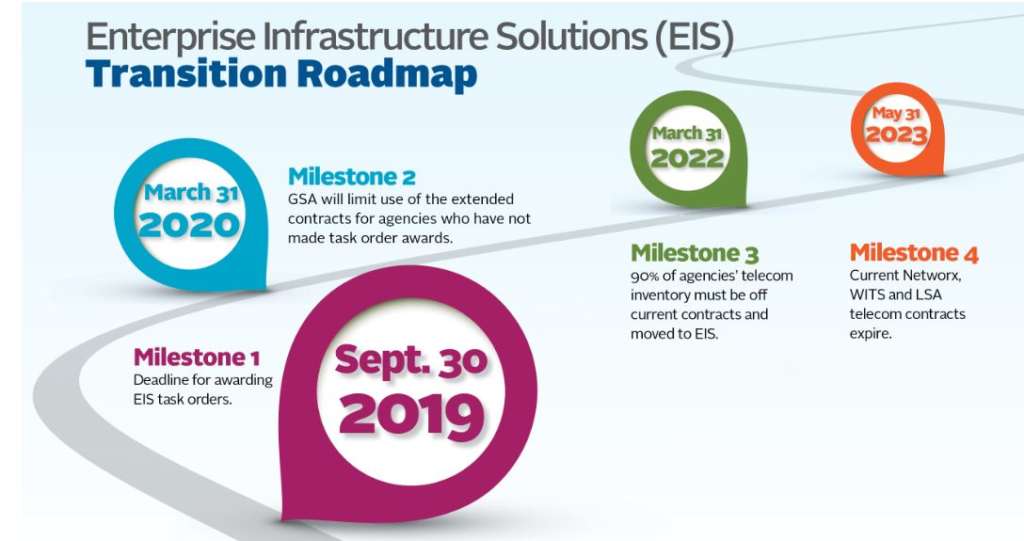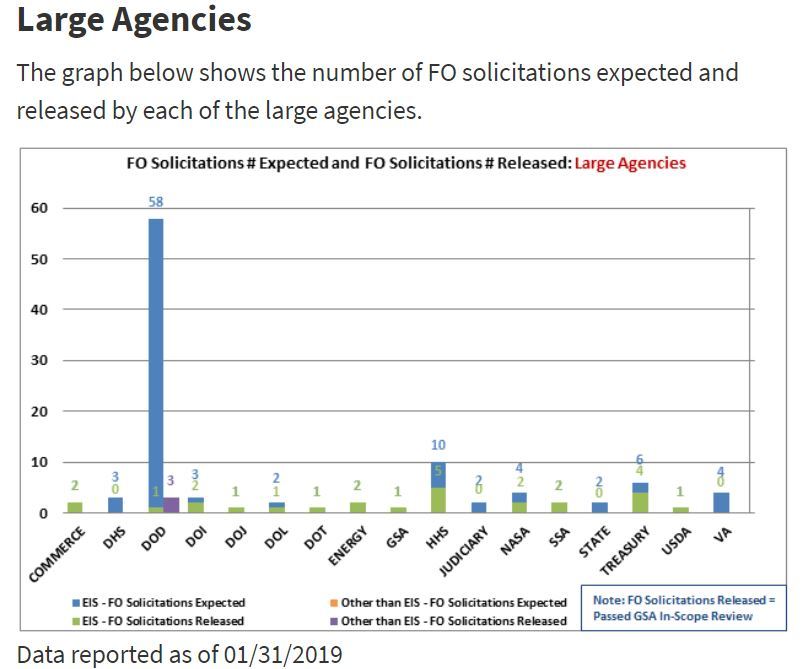

CenturyLink became the first vendor under the Enterprise Infrastructure Solutions contract to receive cybersecurity approval for its business systems.
Best listening experience is on Chrome, Firefox or Safari. Subscribe to Federal Drive’s daily audio interviews on Apple Podcasts or PodcastOne.
The news that CenturyLink passed the last major hurdle to begin offering services under the $50 billion Enterprise Infrastructure Solutions (EIS) contract isn’t necessarily going to set off a tidal wave of solicitations from agencies.
CenturyLink is the first vendor to receive its authority to operate for its business systems, meaning it can accept and process task orders or service orders, provision or deliver services and bill for services. Other incumbent vendors such as Verizon and AT&T aren’t far behind, and the six other “new” companies should be completed in the coming month or two.
Until those vendors receive their ATOs, EIS will remain on a slow roll as agencies are hesitant, maybe even a little fearful of bid protests, to make awards until they feel like there is adequate competition.
“We can award before the ATOs are done, but we can’t execute the order until the ATOs are done. I think most organizations will wait until most or all the ATOs are done to award,” said one agency EIS transition executive, who requested anonymity because they didn’t get permission to speak to the press. “If you don’t wait for all nine vendors, there is a chance you will you go into a protest situation. I think there is some anxiety for how vendors will handle that. Some say only the incumbents have advantage in dealing with ATO, but I think that thinking is full of crap. All the vendors have known what the requirements are to get an ATO for years. But at the same time if I’m going to award, then I want to execute and not wait until there is an ATO because I’m still paying higher rates while I’m waiting for the approval.”
While this is only one expert’s opinion, others in and out of government believe most agencies will wait until the vendors have their ATOs, thus putting the General Services Administration’s March 31 deadline for agencies to release their EIS solicitations further in doubt.
As you may remember, GSA changed the transition timeline for agencies with the caveat of March 31 and Sept. 30 deadlines for releasing solicitations and making awards, respectively. GSA is extending the current Networx contract to May 2023.
“Agencies need to release their solicitations to industry and make timely task order awards so they can make the transition within the four-year window to modernize their IT infrastructure,” writes Bill Zielinski, the acting assistant commissioner in GSA’s Office of Information Technology Category in the Federal Acquisition Service, in a March 14 blog post. “To be clear, GSA intends to extend expiring telecommunications contracts so agencies have enough time to complete the transition and modernize, not to extend the time for the solicitation and task order award process. Agencies need to keep their foot on the gas to ensure they have time to transition their telecom services from their existing contracts and providers to EIS. For example, agencies should issue their solicitations to industry by March 31, 2019. If you don’t issue your solicitations to industry by this date, GSA may cease providing one of our transition support tools for solicitation development — the Transition Ordering Assistance program.”

Additionally, Zielinski said since the 35-day government shutdown didn’t impact most agencies, GSA is keeping to its schedule, but will work with agencies on a case-by-case basis if they need additional help or time.
Bob Woods, a former GSA telecommunications official and now president of Topside Consulting, said GSA should instill and agencies should have a sense of urgency into the entire EIS effort.
“Sometimes you have to create a crisis and that hasn’t happened yet,” Woods said at the recent Independent Telecommunications Pioneer Association (ITPA) lunch in Vienna, Virginia. “GSA has the tools to help agencies, but they can’t issue an edict. They tend to go through the Office of Management and Budget and/or the President’s Management Council (PMC). When the secretary or deputy secretary comes back and asks, ‘why are we behind?’ that’s brings the pressure and gets the attention on the transition.”
Multiple government sources involved in the transition say OMB hasn’t sent any memos, guidance or instructions related to EIS transition, and it hasn’t come up too often during CIO Council meetings.
“The last time for Networx, the communications were more frequent and more structured from OMB,” said another government official involved in EIS transition. “GSA, I think, is getting pushed really hard by OMB to meet the transition dates. GSA said it would work with agencies who are behind.”
And so far as of Jan. 31—the last time GSA updated the transition chart—large agencies released 25 out of an expected 104 solicitations. The Defense Department accounts for 58 out of those 104 total RFPs.


The medium-sized agencies are further behind with only 5 of 40 solicitations out to vendors.
“There is a tsunami of solicitations coming because you are taking Networx, Washington Interagency Telecommunications Services (WITS), the regional contracts and saying we will combine them all into EIS, and that creates the tsunami in-and-of itself. Then GSA is saying do it fast,” the second federal executive said. “Then there are the changes in terms of how GSA is able to handle ordering and billing of the services, which is not nearly as flexible from a workload standpoint than it was previously under Networx.”
The federal executive added their agency is having to hire more people and processing the orders and dealing with the billing will be more costly for the agency.
“I can’t say enough about how well it worked before and how efficient it was,” the executive said. “We are not sure how many more people we will need. We hope we can keep it to 10 people, but some of the estimates say it may be more than that. We previously had about three people doing the ordering and maybe two doing the billing, and we had a defined and automated workflow in with GSA’s workflow.”
The first executive said they expect their transition to EIS to take two years in part because they expect the provisioning of services to take longer due to the complexity of the EIS contract’s approach using task orders.
Experts also say whenever the tsunami of solicitations come out, vendors and GSA alike likely will be overwhelmed.
“Some of industry struggled on Networx to put together quality packages. It was a little embarrassing. We knew we couldn’t call them out and tell them the bids were horrible, but they weren’t good,” said the second executive. “We want everyone bidding, but we may not get that as vendors will have to make hard choices on which opportunities they will cherry pick.”
Copyright © 2024 Federal News Network. All rights reserved. This website is not intended for users located within the European Economic Area.
Jason Miller is executive editor of Federal News Network and directs news coverage on the people, policy and programs of the federal government.
Follow @jmillerWFED



